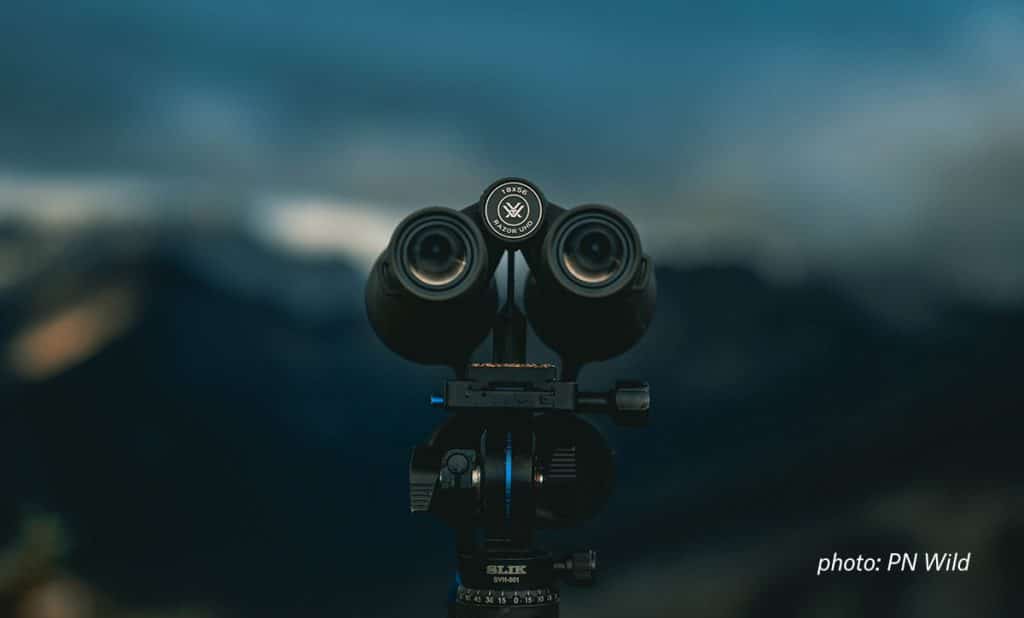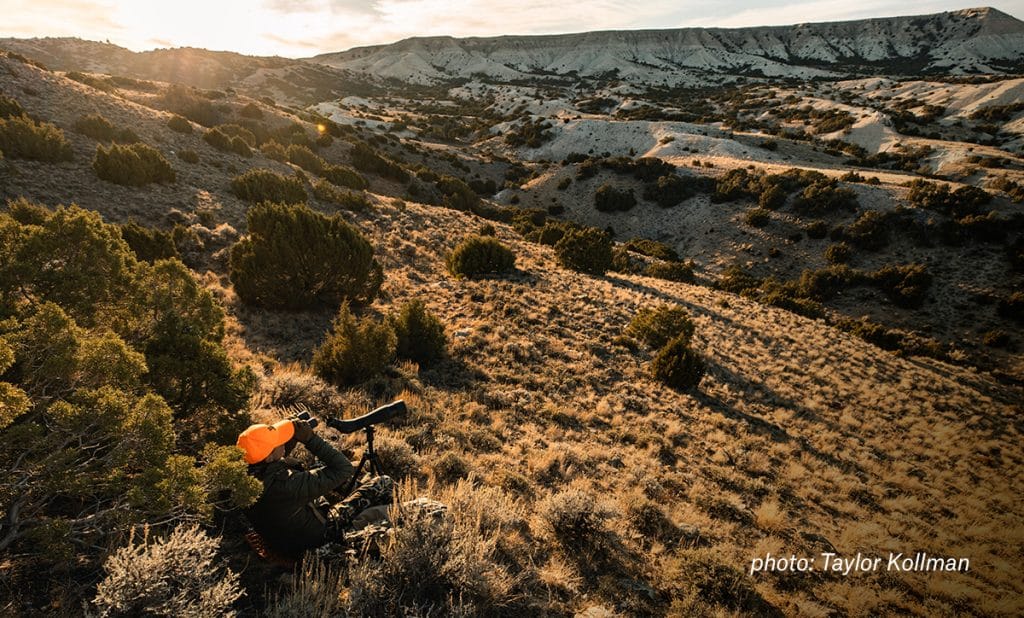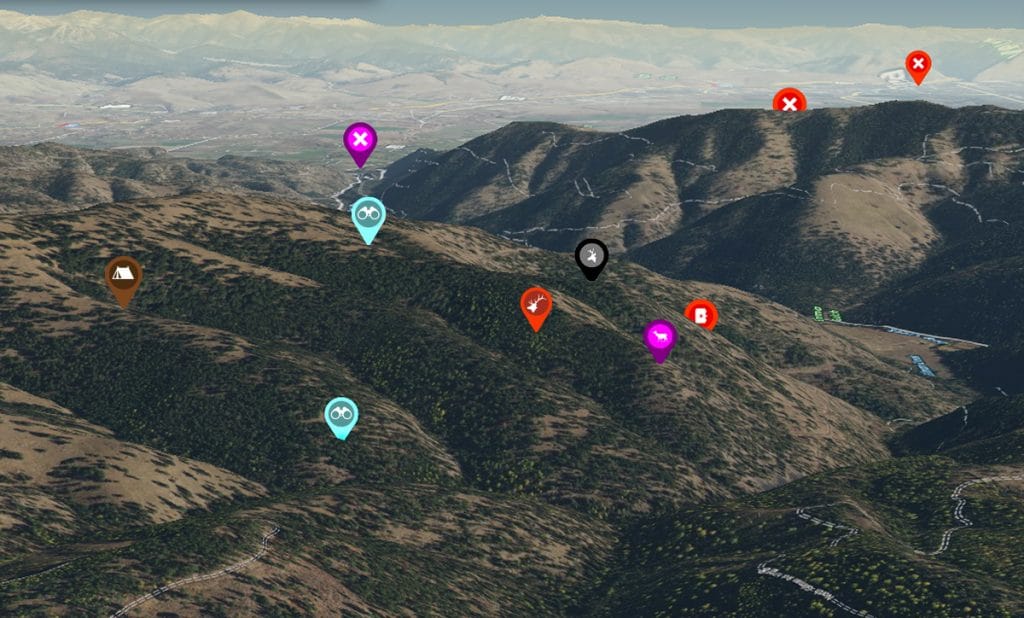Learning how to glass will make you a more complete and competent hunter. Use these tips to start developing your skills, then put them into practice next season.
A capable and proficient hunter is one who has practiced and developed the long list of individual skills that, when combined in the field, result in punched tags year after year. Some of these necessary skills are obvious—we all spend time at the range, for example, to ensure that when we pull a trigger or loose an arrow, we’re confident that our projectile will find its mark. There are other skills, however, to which we often don’t dedicate an appropriate amount of time, thought, and practice. One of these is glassing.
What Is Glassing?
Simply put, glassing refers to the act of spotting game at a distance from a stationary position with the aid of binoculars or a spotting scope. These tools, our glass, allow us to closely observe areas of interest with a far lower risk of revealing ourselves to the game. Then, once a potential harvest is identified, we close the distance to put ourselves within shooting range.

Glassing Equipment
Most hunters already possess the equipment needed to glass—really, all you need is a set of binoculars or a spotting scope. Of course, additional items will make your glassing sessions more comfortable and more productive, so consider adding a few more items from the list below as finances allow.
- Binoculars: Most hunters will find a pair of 10X magnification binoculars to be the right tool for the job. And as with most things, you get what you pay for. More expensive binoculars will typically provide a crisper image and capture more light, allowing you to see more clearly and maintain better viewing abilities in low-light conditions.
- Spotting Scope: A spotting scope is more of a specialty tool to be used when glassing from an extremely long distance or when you need to examine something in detail, such as determining the legality or size of an animal.
- Tripod: A tripod provides both comfort and steadiness, so consider adding something like the Vortex High Country Tripod to your kit. At just over two pounds, both your eyes and your arms will thank you for a clearer view of the landscape and less fatigue compared to hours spent holding binoculars to your face.
- Seat Pad: We’ll discuss the importance of comfort in a bit more detail below, but consider adding a small glassing pad like the Therm-a-Rest Z Seat. While a rolled-up jacket is better than nothing at all, a dedicated pad can make all the difference during long glassing sessions.

Choosing Your Location
Many factors go into determining the ideal glassing spot, including time of day, wind direction, the position of the sun, and the expected behavior of the animals you’re pursuing. An ideal glassing location will provide as many of the following factors as possible.
- Unobstructed views of the areas in which you expect to see animals.
- The ability to close down the distance when it comes time to make a move.
- Proximity to additional glassing spots if you think you might need or want to move.
- A backdrop to prevent skylining yourself.
Identifying your locations prior to the hunt is critical, and there are two great ways to go about this. First, boots-on-the-ground scouting during the offseason will pay dividends later. Create Photo Waypoints from promising locations, and plan your routes to minimize travel time and route hazards. Second, onX Hunt’s 3D Maps give you the chance to scout remote areas or faraway states without having to be on the ground. When you arrive for your hunt, you’ll already have a picture of the landscape and a gameplan ready to go.

Breaking Down the Landscape
It can be positively daunting to arrive at your glassing spot, set up for an hours-long session, and be faced with an immense and overwhelming amount of ground to cover. The best strategy is to divide the landscape into a series of more manageable sections before you begin to glass. For example, you might work in the following order.
- Open areas that allow you to either identify obvious game or eliminate large areas of the landscape that aren’t holding animals.
- Edges of openings that require a closer look.
- Small openings and brushy areas.
- Densely covered areas that take more time.
Another option is to break the landscape down into a grid pattern before moving your binoculars in horizontal passes to cover the area. Be sure to slow down and take a closer look at likely spots, though, as this approach causes some hunters to miss obvious animals. Remember, not all ground is equally likely to hold game.
The specifics of your plan are less important than having a plan in the first place, so figure out what works for you. Give the grid pattern a try, but know that other options exist. For example, you could work the landscape in an M or W pattern once you’ve completed your initial scan.
Additional Tips
- Eyes First: Before you pick up your binoculars and begin picking apart the landscape, make sure you give the entire landscape, particularly the ground closest to you, a good look with the naked eye. This could prevent spooking nearby game, but it can also help you build your plan for how you prioritize the glassing itself.
- Slow Down: No matter how slow you think you’re working, work slower and look more closely.
- Stabilize: If you’re glassing without a tripod, you can use your body to help stabilize your binoculars. Try looping a few fingers over the brim of your hat or rest your elbows on your knees.
- Don’t Just Look for Animals: This is a bit of a ‘forest for the trees’ tip. Instead of only looking for entire animals, try looking for antlers or patches of fur. Sometimes, this change in perspective can make all the difference.
- Use Waypoints: Place Waypoints exactly where you see an animal, then take a picture of the area and add it to your Waypoint. It’s easy to lose track of an animal once you start to move, and this tip will help you recalibrate when you get a little turned around.
- Use the Line Distance Tool: Measure distances to various landmarks and prominent terrain features. This will help you build a plan to close the distance in various directions before it’s time to move. When the time comes, you’ll be ready.